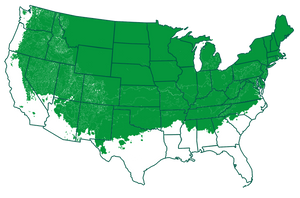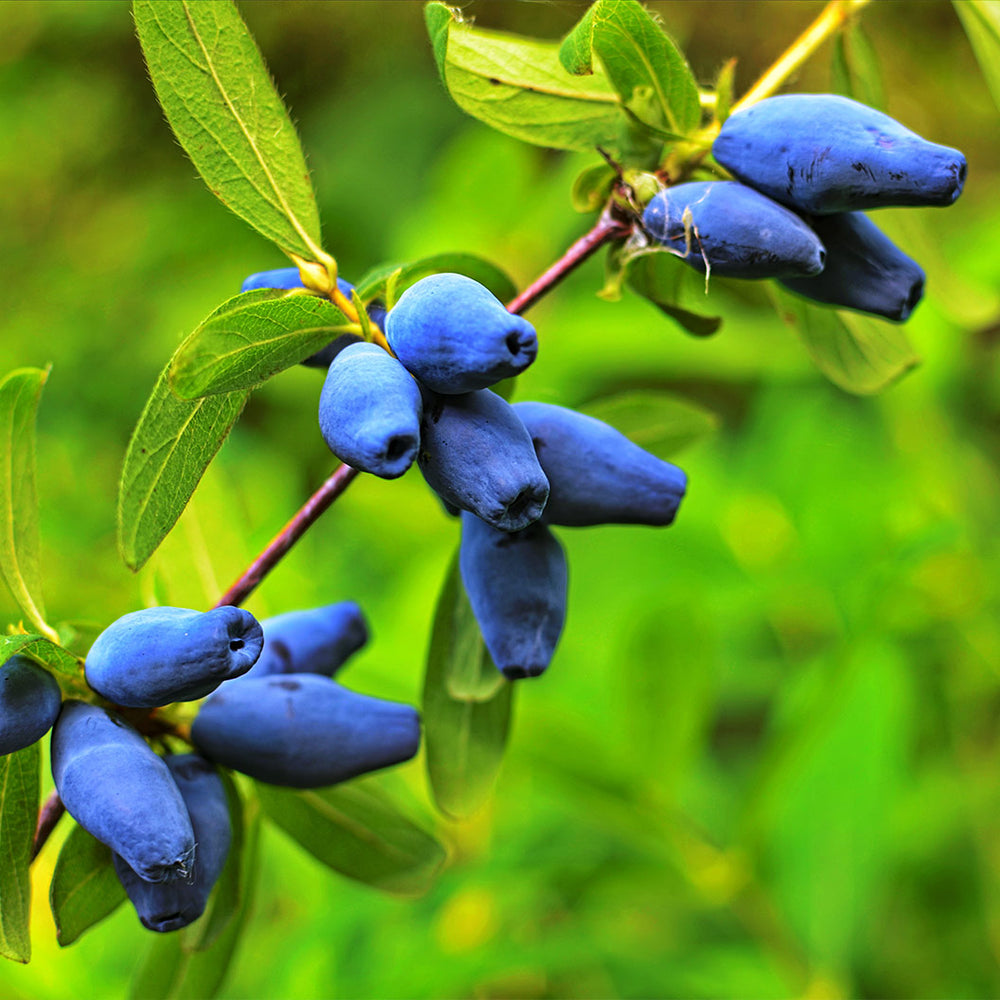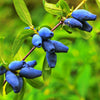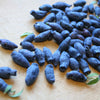* Images shown are of mature plants

Have questions? Talk with our Plant Experts (800) 973-8959
Unique Shrub Promises Bountiful Fruit Harvests
Introducing our wonderful Tundra Honeyberry—a versatile shrub that promises a bounty of delicious fruit! With its remarkable adaptability and minimal maintenance needs, this plant is perfect for gardeners of all skill levels.
Tolerant of disease, drought, shade, and cold, the Tundra Honeyberry thrives in various climates and conditions. Plus, its ability to control erosion adds to its versatility, making it an excellent choice for gardeners seeking both beauty and practicality.
Beyond its resilience, the Tundra Honeyberry delights with its sweet and flavorful berries, similar in flavor to both blueberries and raspberries. Each harvest offers a plentiful yield, providing ample opportunities for culinary exploration - or simply enjoying straight from the garden!
Maximize your fruit production: The Tundra Honeyberry does require a pollinator to produce fruit. Add an Aurora Honeyberry to your order and plant it nearby to ensure you'll get berries!
Whether you're looking to enhance your landscape or create a fruitful oasis, this unique shrub is sure to exceed your expectations. Don't miss out on the opportunity to enjoy this fruit harvest year after year—get your Tundra Honeyberry today!
Planting & Care
1. Planting: Plant honeyberries in well-draining soil and ensure they receive full to partial sunlight.
2. Watering: Water honeyberries consistently, keeping the soil consistently moist but not soaked. Mulch around the base to retain moisture and reduce weed competition, promoting optimal growth and fruit production.
3. Pruning: Trim in late winter or early spring for optimal outcomes. Remove any damaged, diseased, or frail branches, avoiding pruning more than half of the most recent growth.
4. Fertilizing: Fertilize honeyberries in early spring with a balanced, slow-release fertilizer formulated for acid-loving plants. Repeat the application in late spring or early summer to support healthy growth.
5. Pollination: Honeyberries should be planted near each other to promote cross-pollination. For the Tundra Honeyberry, choose a pollinator like the Aurora Honeyberry.
Shipping Details
Estimated Shipping Time: Most orders ship immediately. As noted on the website, some items are seasonal, and may only ship in spring or fall. Once your order is shipped, you'll receive an email with a tracking number.
| Amount of Order | Shipping Charge |
|---|---|
| Less than $49 | $19.95 |
| $49 + | FREE SHIPPING! |
Product Details
| Mature Height: | 3-4 ft. |
| Mature Width: | 3-4 ft. |
| Sunlight: | Full-Partial Sun |
| Blooms: | Early Spring |
| Growth Rate: | Moderate Growing |
| Drought Tolerance: | Good |
| Botanical Name: | Lonicera caerulea 'Tundra' |
| Does Not Ship To: | AK, AZ, HI |
| Grows Well In Zones: | 3-7 outdoors |
| Your Growing Zone: | # |





